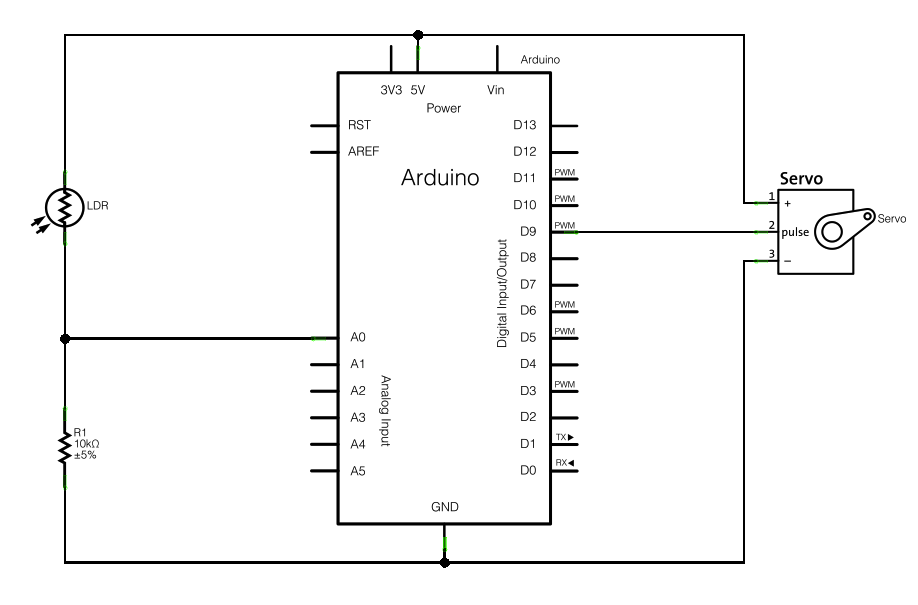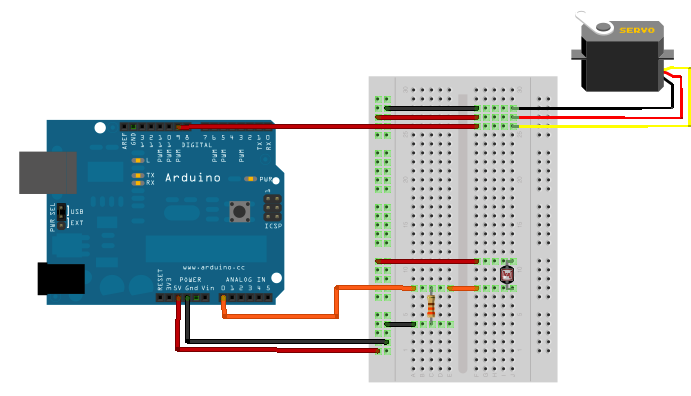How to couple a servo to a photo-resistor on an Arduino board
2011 Sep 04 ( 2 minutes )
After using the great examples provided in the Arduino kit, I decided to create my own circuit (nothing very fancy) by combining 2 examples and see if it’s going to work.
So I first draw the schema:

Components:
- 10k ohms resistor (R1)
- photo-resistor (LDR)
- Servo motor (Servo)
- Arduino UNO or alike
Then tested it. And it worked the first time :)
Pretty nice to see the servo moving when the light goes down or up.
Here is the code I’m using:
#include <Servo.h>
Servo myservo;
int pos = 0;
int lightPin = 0;
void setup() {
// attach the pin 9 to the servo
myservo.attach(9);
}
void loop() {
// read the current voltage at lightPin (0)
int lightLevel = analogRead(lightPin);
// make sure to constrain the value from 0 to 360
// this analog pin has 1024 values (10 bits)
lightLevel = map(lightLevel, 0, 1023, 0, 359);
pos = constrain(lightLevel, 0, 359);
// finally set the servo angle
myservo.write(pos);
delay(100);
}I guess now it’s time to create something more complex! :-)
Update - 2011/09/07:
I’m adding also the breadboard view made with Fritzing:

I have also fixed the source to take account that the analog pin is encoded with 10 bits and therefore goes from 0 to 1023.
The resistance R1 is actually 10k ohms and not 330 … sorry about that.